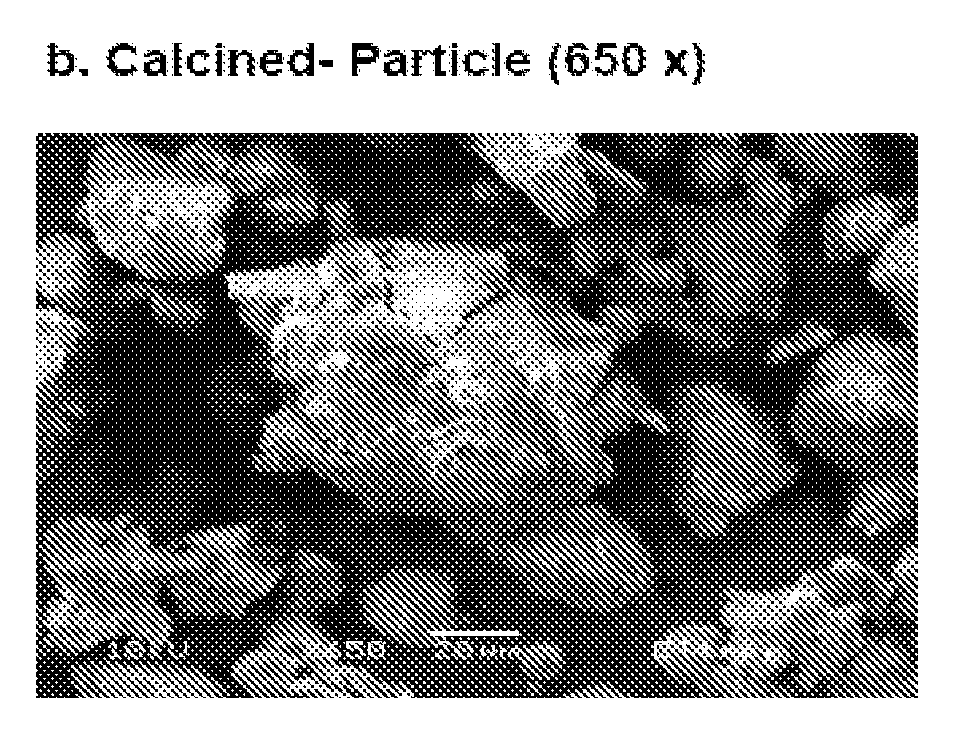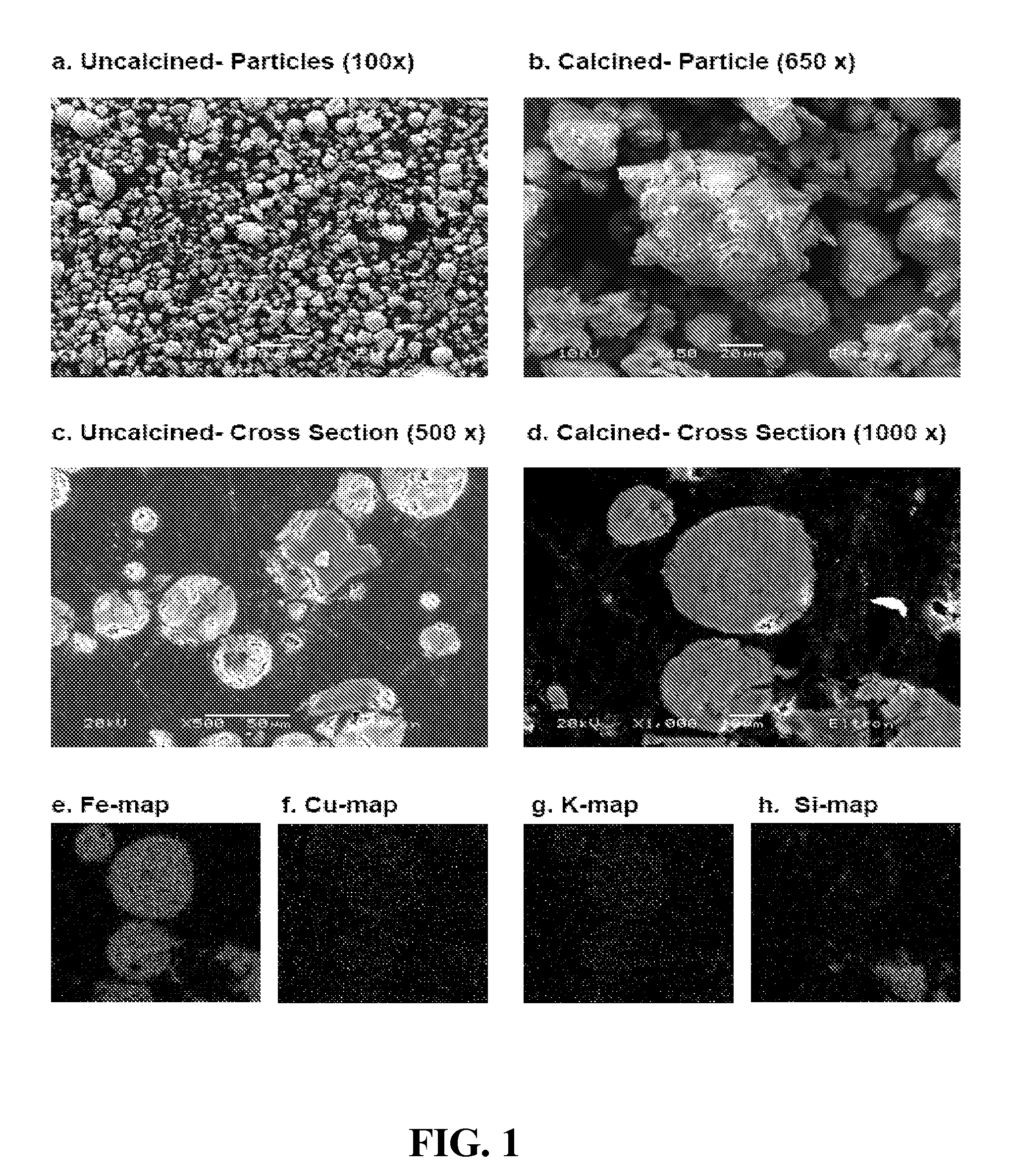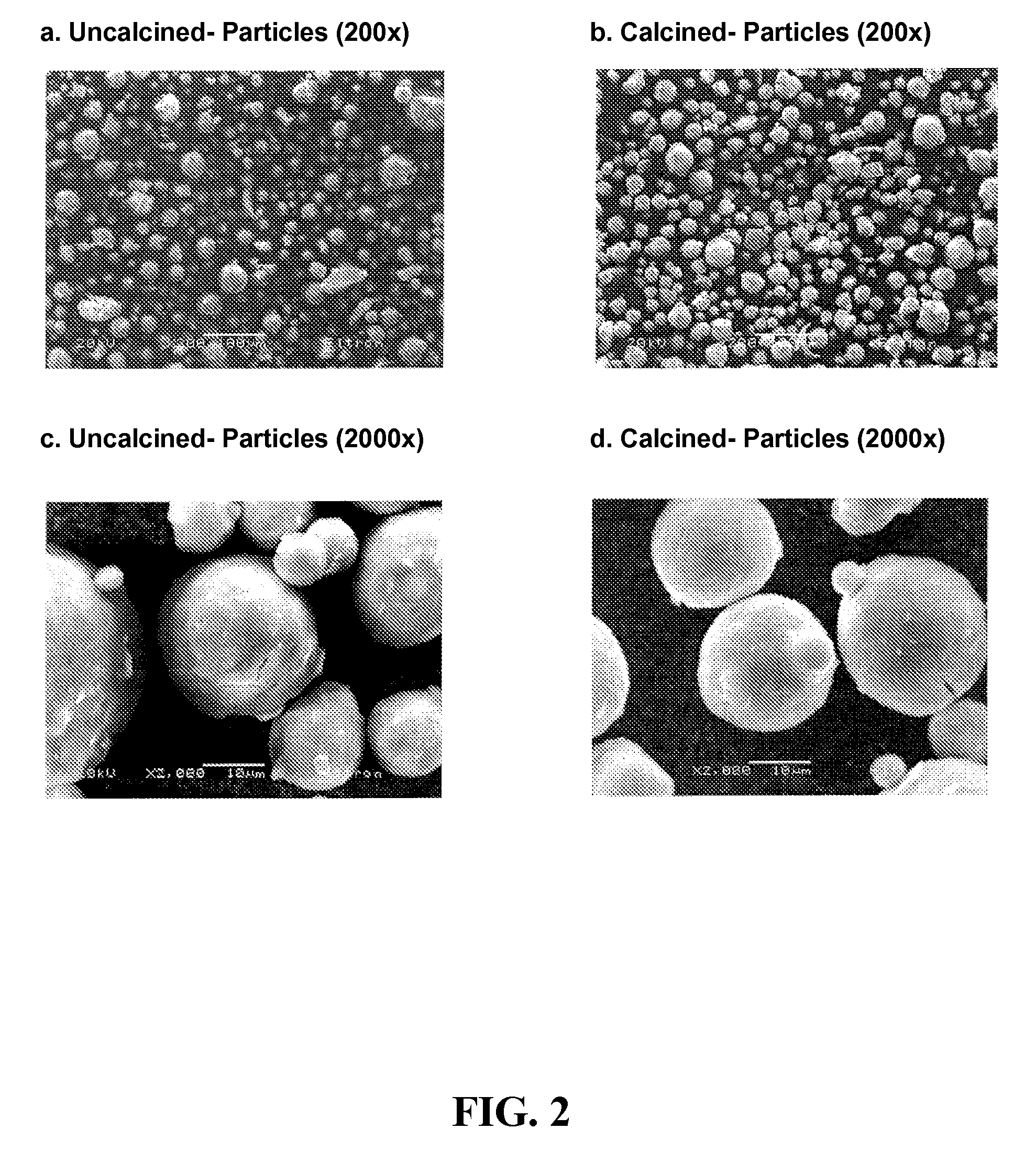Promoted, attrition resistant, silica supported precipitated iron catalyst
a precipitated iron catalyst and attrition resistance technology, which is applied in the direction of catalyst activation/preparation, metal/metal-oxide/metal-hydroxide catalyst, physical/chemical process catalyst, etc., can solve the problems of reducing the online time of the reactor, and affecting the attrition resistance of the catalyst. , to achieve the effect of improving the attrition resistance of the fischer-tropsch catalys
- Summary
- Abstract
- Description
- Claims
- Application Information
AI Technical Summary
Benefits of technology
Problems solved by technology
Method used
Image
Examples
example 1
Recipes 1-5
[0068]Support structures were formed using three procedures, referred to as Recipes 1, 2, 3, 4 and 5, respectively. For Recipe 1, a suspension of crystalline silica (SIL-CO-SIL-75 from the US Silica Company—Mean PSD of 25 micron) in distilled water was created, where after 45 wt. % KOH (Aldrich) was added to create either a 2.5 or 5 K / 100 Fe and 6, 12 or 24 SiO2 / 100 Fe system. After addition of the KOH the mixture was heated to 45° C. and then added to the iron hydroxide slurry. A preparation of a support only material (i.e. not a catalyst) Recipe 1 was a “rock hard” cement-like material. The support, at 100° C., dried to a dense ceramic-like mass and was difficult to break or chalk with a sharp object. The material was smooth / not very porous. For example, SupSi-12 was formed by Recipe 1 by mixing 10 grams SIL-CO-SIL-75 silica and 6 grams DI water for 5 minutes. A quantity of 4 grams KOH (45 wt. %) was added and mixed for 5 min. The solution was heated to 45° C. and mixed...
example 2
XRD Study
[0078]As shown in Table 2, spectra for the different samples indicated amorphous systems (with a very prominent SiO2 peak), becoming crystalline on calcinations, depicting two definitive, equal sized, peaks for maghemite and hematite. Smaller peaks identifying K2O and CuO were also evident. As expected these peaks varied significantly in sized depending on 6 or 24 Si / 100 Fe.
example 3
BET, PV, & PD Studies
[0079]Literature on silica indicates an increase in surface area for silica addition up to approx 20-25% silica. Surprisingly catalyst studied here show an opposite trend. For Recipe 1 samples FeKSi-1, 2, & 3 two 24 SiO2 / 100 Fe systems indicated BET areas of 144 and 150 m2 / g respectively while a 12 Si / 100 Fe system gave a 234 m2 / g surface area. Similarly a 12 SiO2 / 100 Fe system prepared from Recipe 2 (FeKSi-4) indicated a 226 m2 / g surface area, while a 6 SiO2 / 100 Fe prepared with Recipe 3 (FeKSi-8) gave 237 m2 / g. On calcinations, each of the mentioned catalyst showed a dramatic reduction in surface area to values between 51 and 71 m2 / g.
[0080]The supported catalyst with the higher surface areas following calcination were produced using support Recipe 1 preparations for 24 / 100 Fe (FeKSi-2) and 12 Si / 100 Fe (FeKSi-3) systems, yielding surface areas of 71 and 70 m2 / g respectively. IARC catalyst RI-DD-17 produced using Recipe 5 exhibited a significantly higher BET su...
PUM
| Property | Measurement | Unit |
|---|---|---|
| Temperature | aaaaa | aaaaa |
| Temperature | aaaaa | aaaaa |
| Temperature | aaaaa | aaaaa |
Abstract
Description
Claims
Application Information
 Login to View More
Login to View More - R&D
- Intellectual Property
- Life Sciences
- Materials
- Tech Scout
- Unparalleled Data Quality
- Higher Quality Content
- 60% Fewer Hallucinations
Browse by: Latest US Patents, China's latest patents, Technical Efficacy Thesaurus, Application Domain, Technology Topic, Popular Technical Reports.
© 2025 PatSnap. All rights reserved.Legal|Privacy policy|Modern Slavery Act Transparency Statement|Sitemap|About US| Contact US: help@patsnap.com



